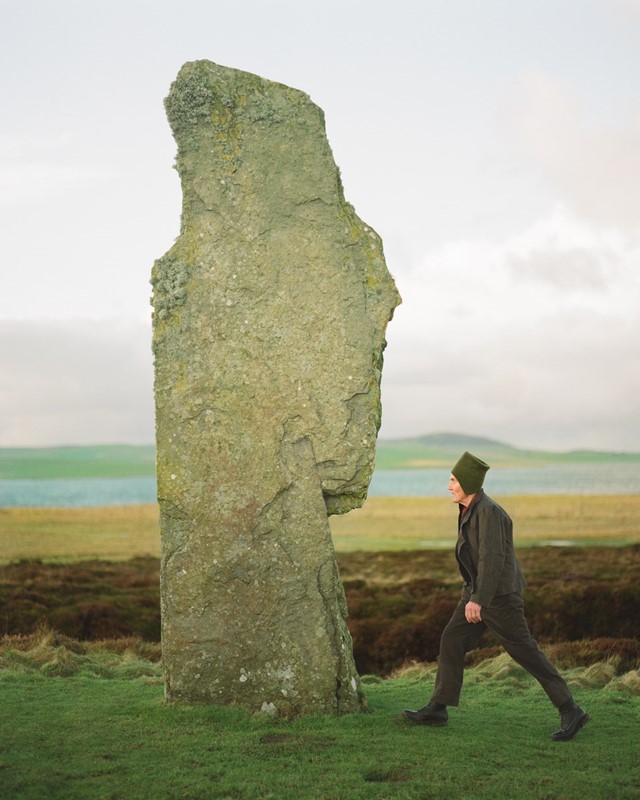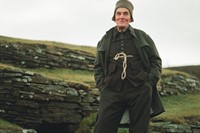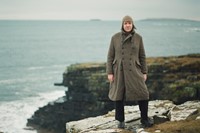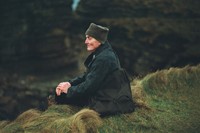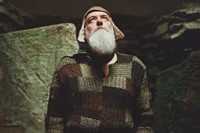This season, John Alexander Skelton presented his new collection as an exhibition for the first time. Here, the Yorkshire-born fashion designer talks about capturing his clothing on the local townsmen of Orkney, Scotland
At least in appearance, John Alexander Skelton lives up to his reputation as British fashion’s prophet of folklore storytelling. Despite consistently choosing to present his collections off of the clamouring fashion week schedule, the Yorkshire-born designer has been making waves with offbeat presentations that reframe fashion in a theatrical context – and occasionally with compulsory audience participation. For the first time, Skelton’s latest collection (titled in Roman numerals as per tradition – Collection XIV) is being presented as an exhibition of photographs taken by William Waterworth and a film directed by Joel Kerr (who have previously collaborated for AnOther). This show is open to the public for two days only, and captures his clothing on the local townsmen of Orkney, Scotland.
“The premise of the collection is centred around Neolithic Britain,” says Skelton, “but more specifically around the art and architecture created during this period.” Orkney, an archipelago off the northeastern coast of Scotland, encompasses a number of Neolithic sites with mostly obscure functions, and its art is characterised by decorative etchings theorised to be maps to the stars or safe routes to other settlements. Decking the walls of east London’s House of Annetta – the former 18th-century home of the late artist Annetta Pedretti which now stands dilapidated and worn, scented by the smells of charred wood – are Waterworth’s photographs of the collection in wooden frames, decorated with Neolithic-style etchings.
Standing proud and stoic amid the Rings of Brodgar, Stones of Stenness and by the North Sea, the locals don the new collection in a series of images echoing the natural environment and its mysterious man-made landmarks. While in London and other urban settings the label’s wearers often appear quite idiosyncratic in these designs of a bygone era, here there’s a rare sense of synchronicity found in the historic surroundings. “The decisions for the colour palette and choice of fabrics were made to sit harmoniously within a natural setting, and the way the clothing is designed is to be utilitarian, but with more of a romantic feeling about them,” says Skelton. The collection’s prints and embroideries draw direct inspiration from rock carvings; seemingly alien shapes once etched in stone are stamped onto antique linens, and knitted patchwork cardigans mirror fields of crops, all the while echoing the clothes of working-class men of centuries past.
Out through a small courtyard, a projector loops Joel Kerr’s film, which similarly captures Okney’s residents, as they speak on the significance of the area and their personal intimacies with its history, soundtracked by the jaunty sounds of a local fiddle player. “The collection does not represent a literal translation of the inspiration behind it, aside from some of the prints, jewellery and various other accessories,” says Skelton. “It’s more a feeling of being closer to nature and the changing of seasons.”
The designer’s practice revives a long, rich and labour-intensive history from lost generations of craftsmen, using various textile mills and individual artisans throughout the UK, Ireland and India to develop unique fabrics as to his specification, along with the use of deadstock materials. The resulting garments are the antithesis of fast fashion – a balm away from the churning machine – that reflect the longevity and romance of lasting Neolithic sites across Britain. Even Skelton’s website features just a single image of a piece of paper that lists only the label’s stockists and email address scrawled with his distinct handwriting. It’s the same penmanship that signs every label of clothing they produce.
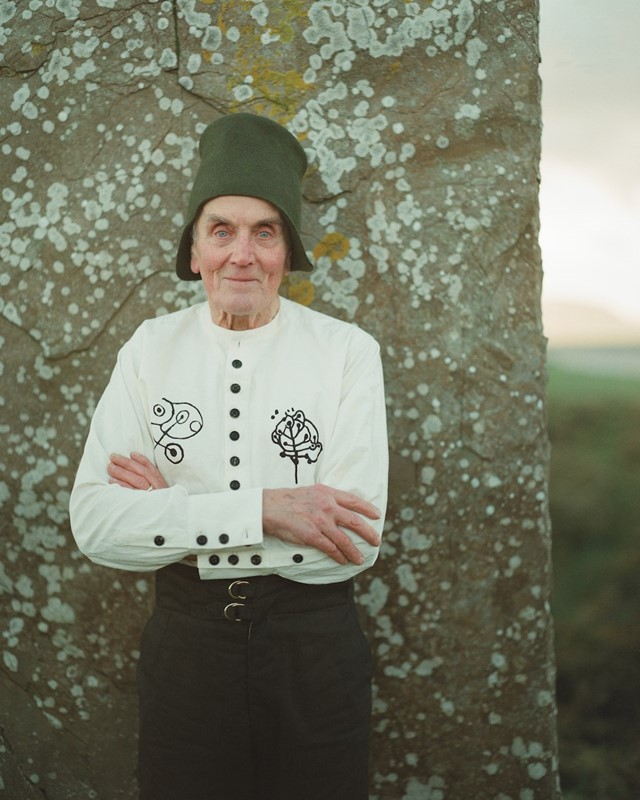
“In terms of the clothing I make, I often hear the words ’nostalgia’ or ’heritage’, which I don’t associate with at all. I don’t cater to a certain crowd or person, I just make what I like and whoever likes it can wear it as they wish,” says Skelton. Dig deeper to discover that threading through every collection is a modern sensibility; deciding to show at House of Anetta – a building set up in 2001 to support spatial justice and land reform – holds particular ethical significance to Skelton. “What it represents and allows is extremely important, especially in London at the moment. There is less and less space for creativity in this city, with rents of studios and places to show work that are not on the fringes of London being obscenely priced.”
While previous presentations have been creepier, more ceremonious excursions starring a menacing crew of grizzly throat-singing blokes in a medieval pub, or marching through a crypt by candlelight as if partaking in some illicit smuggling, this exhibition marks a calmer departure. Despite Orkney’s cryptic history, what is known about the people of Neolithic Britain is their closeness and synchronicity with nature and its seasons – something we should all take stock of given our current climate. “I also wanted to do something different to keep the juices flowing. Doing the same thing every year gets boring, no matter how different each show is.”
Collection XIV by John Alexander Skelton is on show at House of Annetta, 25 Princelet Street, London, E1 6QH now until 14 January.
